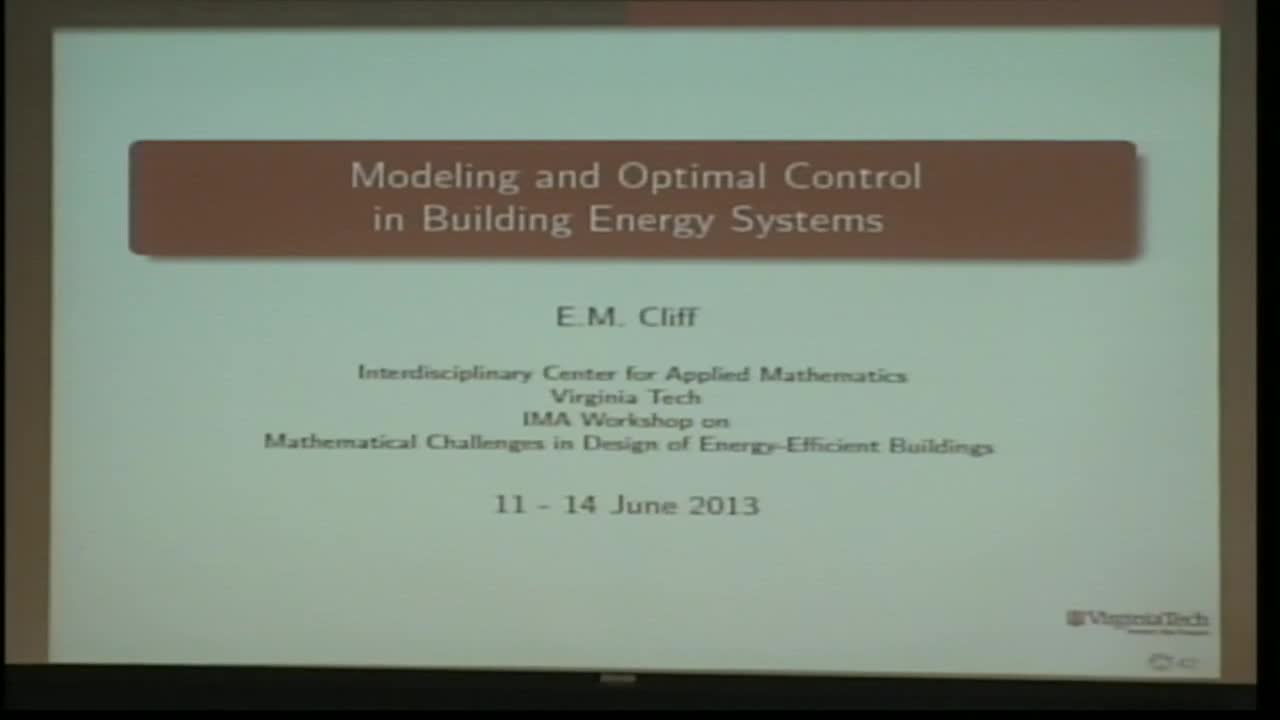Modeling and Optimal Control in Building Energy Systems
Presenter
June 13, 2013
Keywords:
- Optimal Control
MSC:
- 93E20
Abstract
In most cases mathematical models for building thermal control assume that the state of the zone-air can be represented as a single temperature - the well-mixed hypothesis. In cases such as non-uniform solar loads, or buoyancy-driven cooling such models are problematic. In recent work we have developed data-driven approaches wherein results from CFD simulations are used to develop linear-time-invariant reduced-order models (ROM). In this talk we discuss two such approaches: one based on a subspace iteration to optimally reduce the dynamic order, and a second, ad-hoc approach, that captures important long-term behavior. The ROM is being used by colleagues at Purdue to study implementations of Model Predictive Control (MPC), which has emerged as a preferred approach to optimal closed-loop control of building energy systems. MPC control is commonly realized in update form by solving a sequence of finite-dimensional nonlinear programming problems (NLP) that approximate the discrete-time behavior of the building thermal dynamics on the remaining time horizon. It is of interest to compare NLP results with controls arising from applying optimality conditions to a corresponding continuous-time optimal control formulation. Our objectives are to benchmark the NLP solutions and to develop heuristics that lead to more efficient NLP parameterizations. We study a rather simple, three-state model of a single zone with comfort limits imposed as a state-inequality constraint.
